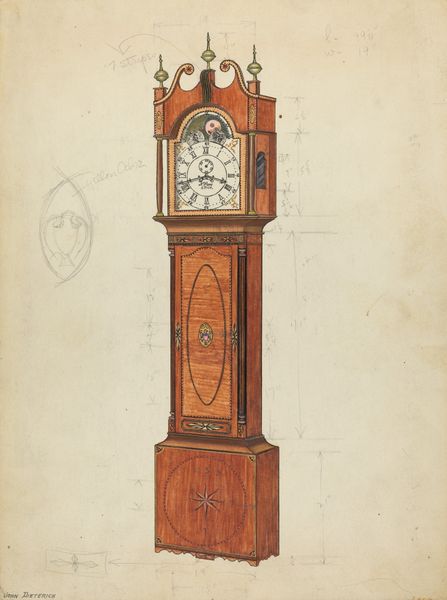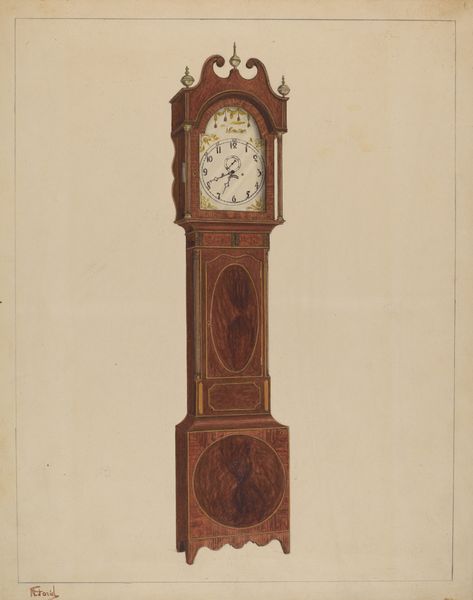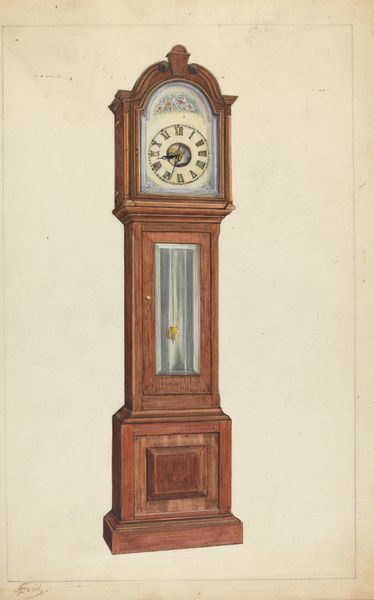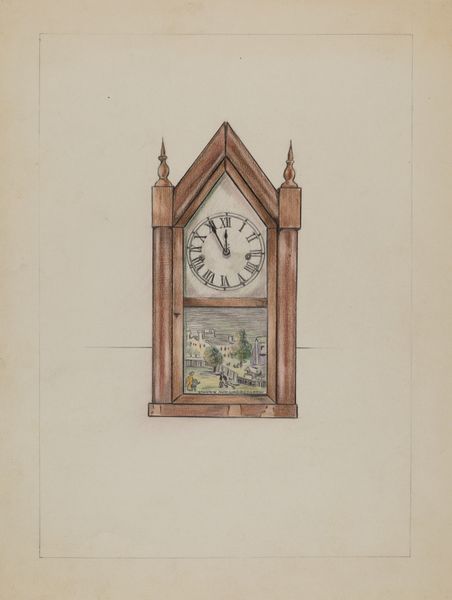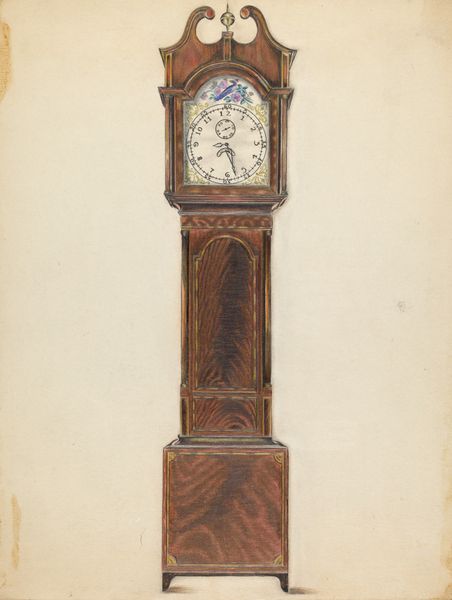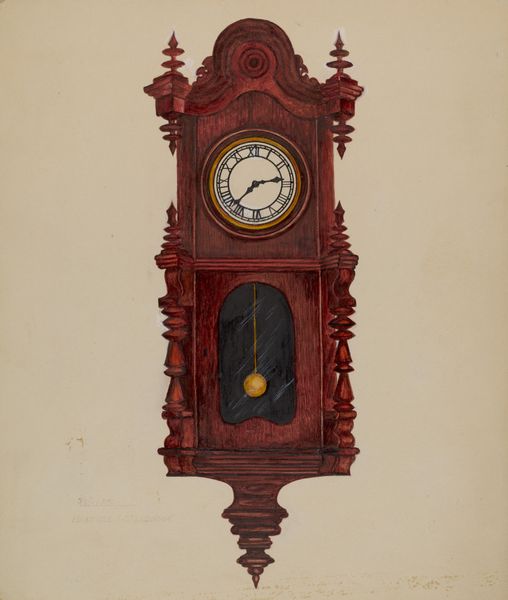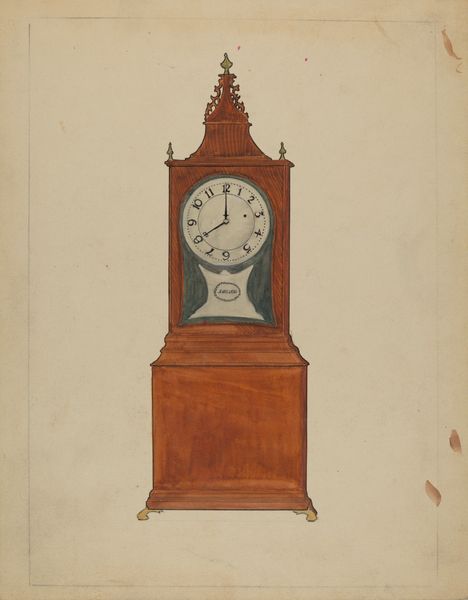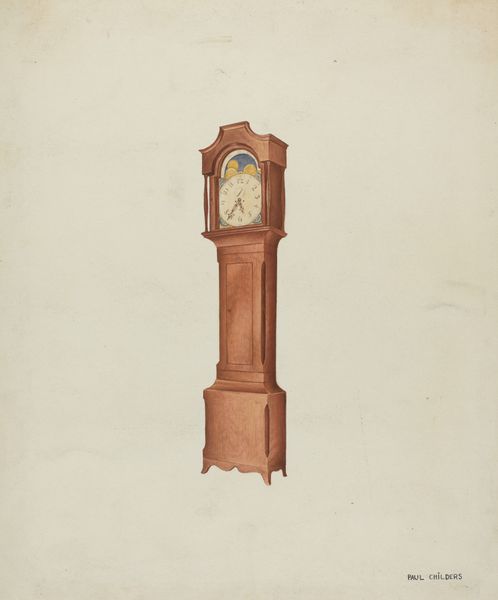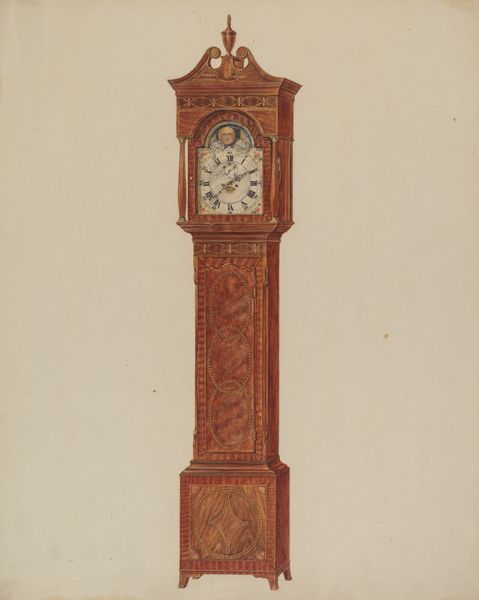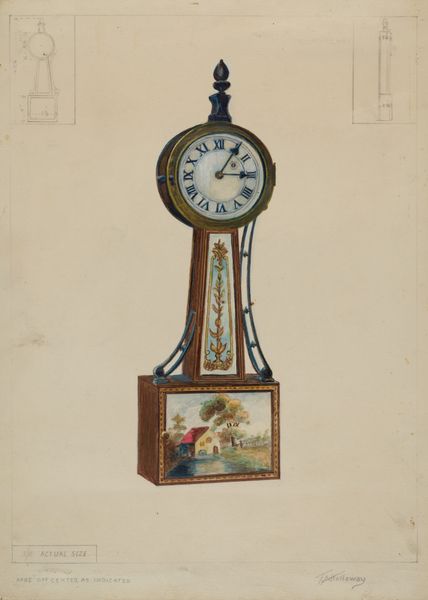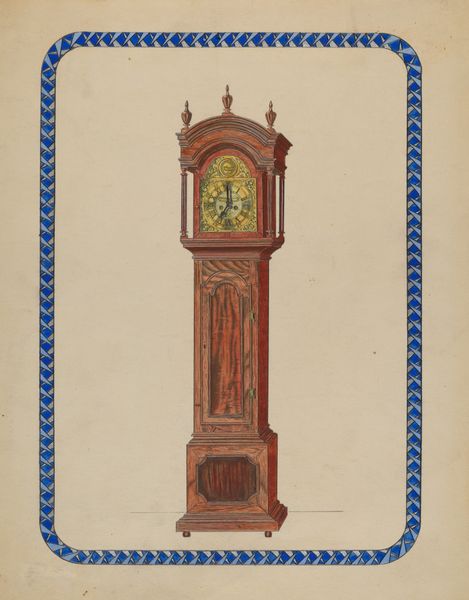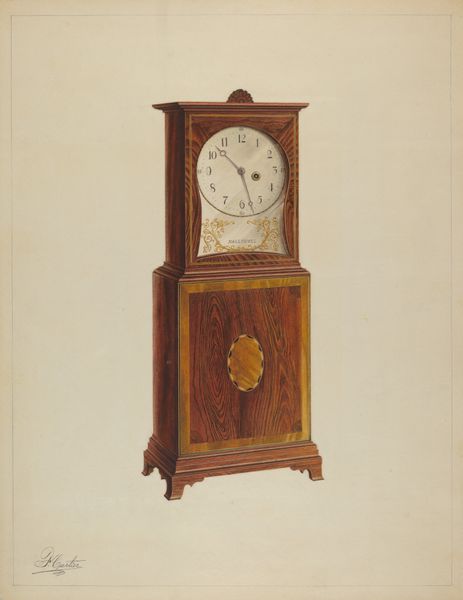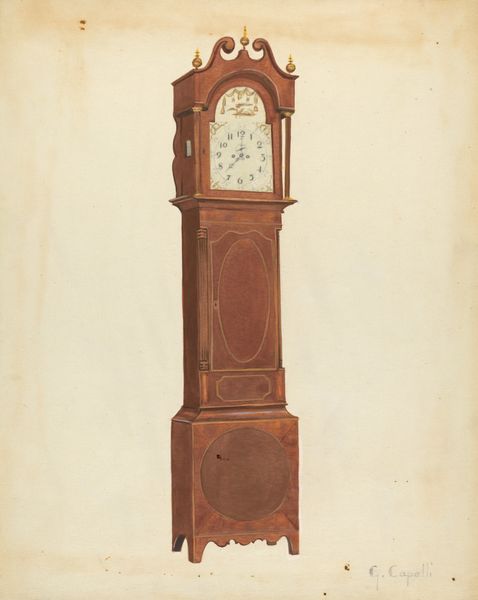
drawing, coloured-pencil, watercolor
#
drawing
#
coloured-pencil
#
watercolor
#
coloured pencil
#
watercolour illustration
#
academic-art
#
decorative-art
Dimensions: overall: 37 x 28.8 cm (14 9/16 x 11 5/16 in.) Original IAD Object: 101"high; 20"wide; 11"deep
Copyright: National Gallery of Art: CC0 1.0
Curator: We're looking at "Grandfather" Clock, a piece created circa 1937 by Magnus S. Fossum. It's a rendering on paper using watercolor and colored pencils. Editor: My immediate thought is "domestic anxiety." There's something unsettling about the moon-like faces peering out from the clock's face. And the colours, although muted, feel heavy. Curator: I think your interpretation hits a nerve. During this period, especially for someone working in decorative arts, anxieties about production and the future of craft in a rapidly industrializing world would have been very palpable. The materiality of the clock becomes almost symbolic here. Editor: Precisely! This isn’t just about telling time. Look at the careful detailing in the wood grain, rendered painstakingly by hand. It speaks to a pre-industrial labor process, a dedication to craft that was under threat from mass-produced goods. The drawing itself is an act of labor, isn’t it? Curator: Yes, and let's think about the gendering of time itself. The home, historically the woman's domain, and the "grandfather" clock, a traditionally masculine symbol of authority and order…there's a tension in their intersection. Editor: Absolutely. Time as labour, as a constructed force to create order versus an arbitrary way to control a household… And consider the decorative elements around the clock face, reminiscent of folk art traditions. Is this Fossum's attempt to hold onto older production methods in the face of encroaching modernization? Curator: It certainly feels that way. This object becomes a container for the anxieties of a rapidly changing world, viewed through the lens of craft. The question then becomes what the utility of this drawing truly is, other than purely for display. Editor: Or, perhaps, how the act of drawing the clock, slowing down its image to represent the importance of slowing the process overall, is really the crucial thing to be examined and the labour that needs attention here. It is about making itself as resistance. Curator: That's a very material way to understand not only the art, but also the time within it. Fascinating to consider these different interpretations when you consider craft and production, thank you. Editor: It highlights the beautiful tension between how we understand our culture as being manufactured by humans versus naturally appearing, and where art lies within that paradigm.
Comments
No comments
Be the first to comment and join the conversation on the ultimate creative platform.
